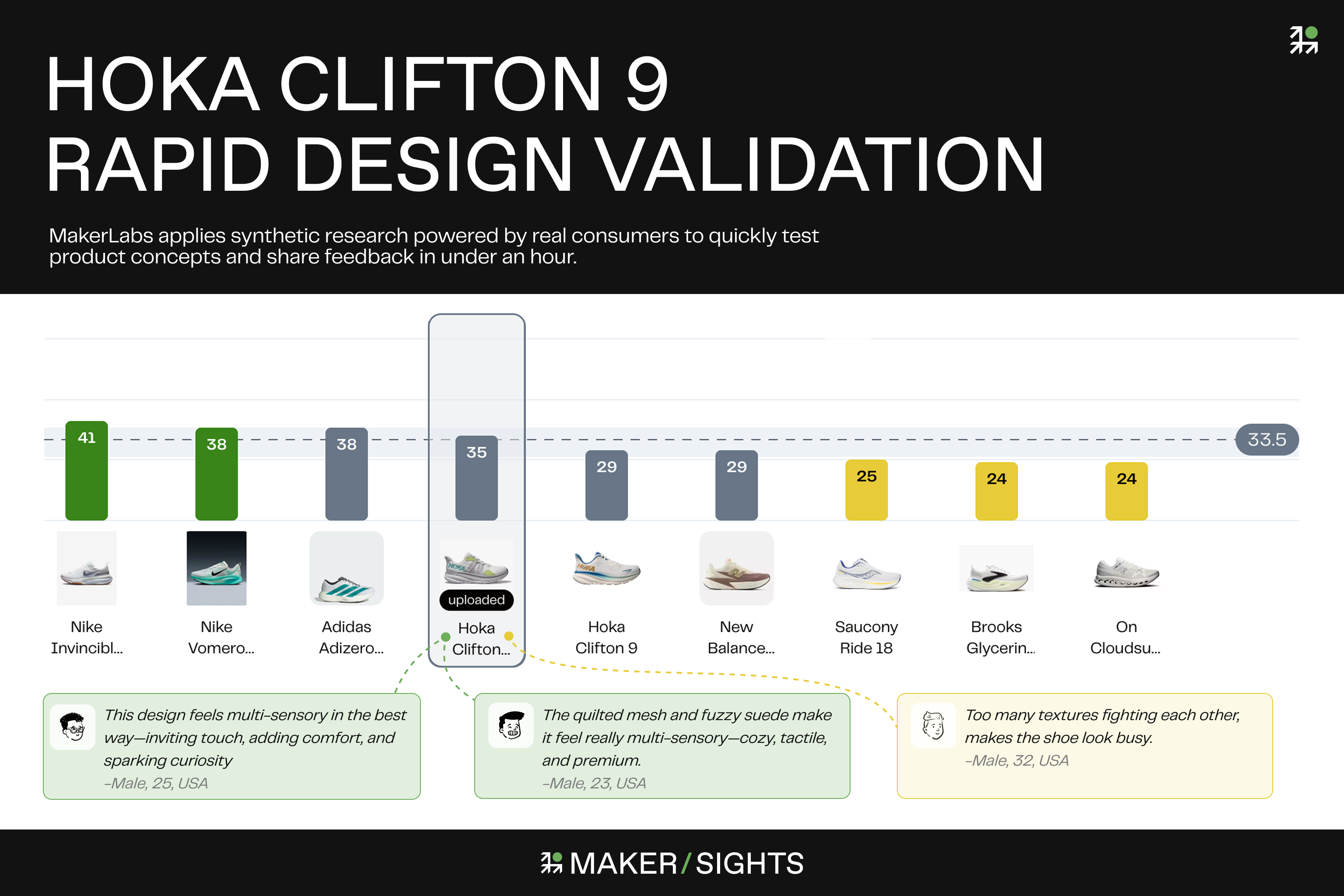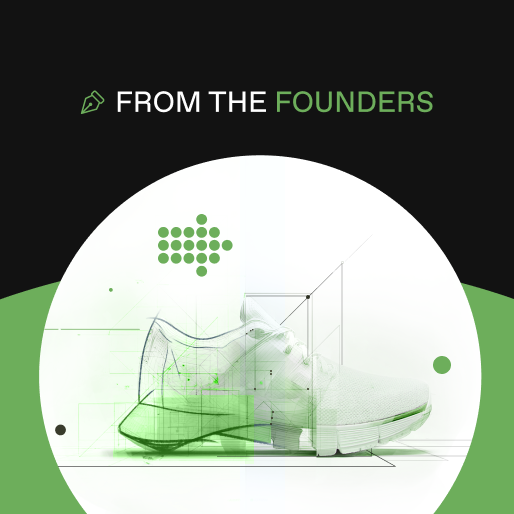


Overview
The Speed of Validation Is Catching Up to Creative Inspiration
by Dan Leahy, Co-Founder & CEO
In the not too distant past, the number of vendors extolling the benefits of generative design at conferences well exceeded the number of designers and product teams that had truly embraced the capabilities into their workflows.
In the last few months, however, we’ve seen interest in these capabilities surge.
Many brands are piloting or implementing solutions. What’s driving this change? Two big shifts stand out:
- Costs and frictions associated with producing lifelike digital product renderings are coming down (way down).
- New capabilities are multiplying the value of scaling digital product assets.
Here’s a tangible example.
Many of our brand partners start their seasonal innovation process with us at pre-season kickoff, when they’re tracking a few new trends in their respective categories and need to make a call on where they’re going to bet big for the season.
These brands are typically hungry for some level of consumer validation before investing heavily in development, inventory, and marketing to launch new ideas into the world.
Until recently, those seasonal themes lived in PDFs from trend services, Pinterest boards from creative teams’ inspo trips, and comp shop photos.
Today, it’s become trivially easy to take this inspiration content and use it to answer critical questions like:
- How big will this idea be with my consumers?
- Does my brand have credibility to play here?
- If we’re going to bet on this theme, how should we execute it?
Here’s an example of how, with today’s tools, you can be well on your way to answering those questions in less than 60 minutes (and if an econ major like me can do this, just imagine what your design team will be capable of):
To start, I wanted to render a trend in a format optimized for benchmarking and validation.
I took WGSN’s Multisensory Materials Key Trend from this summer and used an off-the-shelf rendering tool (Gemini’s Nano Banana) to apply it to a classic running footwear silhouette (Hoka’s Clifton).
Total time commitment: 5 minutes.
.png)
I then uploaded this rendered Clifton into one of our Running Footwear MakerLabs, built around today’s consumer preferences in the run segment, to see how sentiment compares to existing in-market styles.
Upload time: 30 seconds.
I gained feedback from Digital Twins built from detailed taste profiles of hundreds of real U.S. running consumers, benchmarked against thousands of similar styles previously tested.
Turns out, this newly imagined style would compete in the top tier of trend-forward products currently in the market.
My total time commitment: 30 minutes for results to come in (during which time I went and enjoyed myself a cortado).

End-to-end time from initial theme to consumer validation in a fully IP-protected environment in less than one hour.
In a real-world scenario, this workflow would give a category manager the confidence to greenlight designers to build and refine the concept, aligned with brand guidelines and assortment strategy, all within a single working session.
I expect this integration of generative design and curated synthetic research to collapse the timelines between when creatives and strategists identify promising new directions and when their organizations gain conviction to commit.
I’d be really curious to hear from folks who’re actively utilizing generative design capabilities today.
- Which tools have really impressed you?
- What gaps need to be filled before they become fully embraced?
Send your thoughts to hello@makersights.com
In a follow-up newsletter, I’ll share some thoughts on what this dynamic may newly unlock in terms of new sources of creative inspiration.
Dan
Co-Founder & CEO
PS: Learn more about MakerLabs here.
Key Takeaways
Methodology
The Speed of Validation Is Catching Up to Creative Inspiration
by Dan Leahy, Co-Founder & CEO
In the not too distant past, the number of vendors extolling the benefits of generative design at conferences well exceeded the number of designers and product teams that had truly embraced the capabilities into their workflows.
In the last few months, however, we’ve seen interest in these capabilities surge.
Many brands are piloting or implementing solutions. What’s driving this change? Two big shifts stand out:
- Costs and frictions associated with producing lifelike digital product renderings are coming down (way down).
- New capabilities are multiplying the value of scaling digital product assets.
Here’s a tangible example.
Many of our brand partners start their seasonal innovation process with us at pre-season kickoff, when they’re tracking a few new trends in their respective categories and need to make a call on where they’re going to bet big for the season.
These brands are typically hungry for some level of consumer validation before investing heavily in development, inventory, and marketing to launch new ideas into the world.
Until recently, those seasonal themes lived in PDFs from trend services, Pinterest boards from creative teams’ inspo trips, and comp shop photos.
Today, it’s become trivially easy to take this inspiration content and use it to answer critical questions like:
- How big will this idea be with my consumers?
- Does my brand have credibility to play here?
- If we’re going to bet on this theme, how should we execute it?
Here’s an example of how, with today’s tools, you can be well on your way to answering those questions in less than 60 minutes (and if an econ major like me can do this, just imagine what your design team will be capable of):
To start, I wanted to render a trend in a format optimized for benchmarking and validation.
I took WGSN’s Multisensory Materials Key Trend from this summer and used an off-the-shelf rendering tool (Gemini’s Nano Banana) to apply it to a classic running footwear silhouette (Hoka’s Clifton).
Total time commitment: 5 minutes.
.png)
I then uploaded this rendered Clifton into one of our Running Footwear MakerLabs, built around today’s consumer preferences in the run segment, to see how sentiment compares to existing in-market styles.
Upload time: 30 seconds.
I gained feedback from Digital Twins built from detailed taste profiles of hundreds of real U.S. running consumers, benchmarked against thousands of similar styles previously tested.
Turns out, this newly imagined style would compete in the top tier of trend-forward products currently in the market.
My total time commitment: 30 minutes for results to come in (during which time I went and enjoyed myself a cortado).

End-to-end time from initial theme to consumer validation in a fully IP-protected environment in less than one hour.
In a real-world scenario, this workflow would give a category manager the confidence to greenlight designers to build and refine the concept, aligned with brand guidelines and assortment strategy, all within a single working session.
I expect this integration of generative design and curated synthetic research to collapse the timelines between when creatives and strategists identify promising new directions and when their organizations gain conviction to commit.
I’d be really curious to hear from folks who’re actively utilizing generative design capabilities today.
- Which tools have really impressed you?
- What gaps need to be filled before they become fully embraced?
Send your thoughts to hello@makersights.com
In a follow-up newsletter, I’ll share some thoughts on what this dynamic may newly unlock in terms of new sources of creative inspiration.
Dan
Co-Founder & CEO
PS: Learn more about MakerLabs here.




Related Blog Posts
From the Founders Newsletter
A bi-weekly note from Dan and Matt.
Sign up to learn more on consumer insights, synthetic research, and the future of retail, with takeaways you can put to work today.



.jpg)









